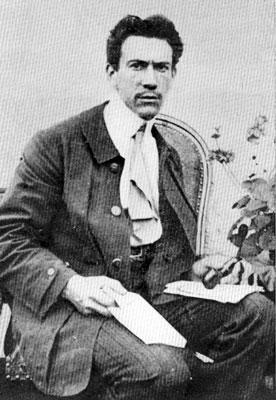Louis Pergaud (Louis Pergaud)

Louis Pergaud accepted his first teaching position in Durnes. After a year, he was called to complete a year of military service with the 35th infantry regiment stationed in Belfort. In the fall of 1903, Pergaud returned to his post in Durne. In 1905 Pergaud transferred with his wife to Landresse, a village that would eventually become so dear to his heart. Initially, life in this small, isolated village was difficult because he found himself in conflict with local people over certain major political issues of the time, the separation of Church and State to name one. In 1907, Pergaud left Landresse and his wife, for Paris, where he joined Leon Deubel, a longtime friend and inspiration. In Paris, Pergaud suffered through extreme poverty, even as he worked as a clerk and then as a schoolteacher, in an effort to realize his dream of literary success. His earliest works were collections of poetry that were published at his own expense through a literary review called Le Beffroi. The first collection, entitled L’Aube, appeared in 1904. The second, L’Herbe d’Avril, was published in 1908. In 1910 Mercure de France published a collection of Pergaud’s short stories under the title De Goupil à Margot. This work was awarded the prestigious Prix Goncourt, which led to some national recognition. A second collection of short stories about animals, La Revanche du corbeau appeared in 1911. His novel, La Guerre des boutons, described below, was published in 1912. In 1913 Louis Pergaud published the novel, Le Roman de Miraut, in which an animal had the leading role. He wrote numerous other short stories about the people and animals of his native Franche-Comté, which would be published posthumously.
In 1912 La Guerre des boutons was published, a tale of a play-war between the small boys of two neighbouring villages. Those “killed” would have their buttons removed as trophies before being sent home. The novel begins humorously, but becomes more sinister as the distinctions between play and real violence among the boys become blurred. It has been described as having a “touch of Lord of the Flies” in tone, although the book substantially pre-dates that novel by William Golding. Louis Pergaud’s works remain popular in France; La Guerre des boutons has been reprinted more than thirty times. It is included in the French high school curriculum for literature. Louis Pergaud had tried to register as a pacifist, but he was conscripted into the French Army at the outbreak of the First World War. He had been placed in the active reserve following his national service twelve years before. In this capacity he served in the Battle of Lorraine during the German invasion of France, and subsequently on the Western Front. On 7 April 1915, Pergaud’s regiment attacked German lines near Fresnes-en-Woëvre, during which Pergaud was shot and wounded. He fell into barbed wire, where he became trapped. Some hours later, German soldiers rescued him and other wounded, taking the French soldiers to a temporary field hospital behind their lines. On the morning of 8 April, Pergaud and others were killed in a French artillery barrage that destroyed the hospital.
Born
- January, 22, 1882
- Belmont, Doubs, France
Died
- April, 08, 1915
- Marchéville-en-Woëvre, France
Cause of Death
- killed in war

